Fort Humboldt
Fort Humboldt State Historic Park
Click for map.
Being both free to visit and over half covered with a lawn, the old fort is to some extent just another city park, but with better direction signs on the road and historic exhibits around the edges. There's also a few museum areas, but they weren't open, so I probably got to experience less than half of what the State Historic Park really has to offer.

I headed out of the parking lot past the administrative offices (the North Coast Redwoods District office is also there) to some exhibits at the north end of the park to find they're not actually about the fort at all. They are all about area logging.

The trail crosses tracks that come out of either side of a barn and the barn holds a couple of old engines. They're a bit hard to see in the barns through the glass, but the tracks suggest that sometimes you can get a better look at them and the certificates allowing operation of a boiler taped onto either window suggest they get out on their own steam. I had to settle for the view fighting the reflections.
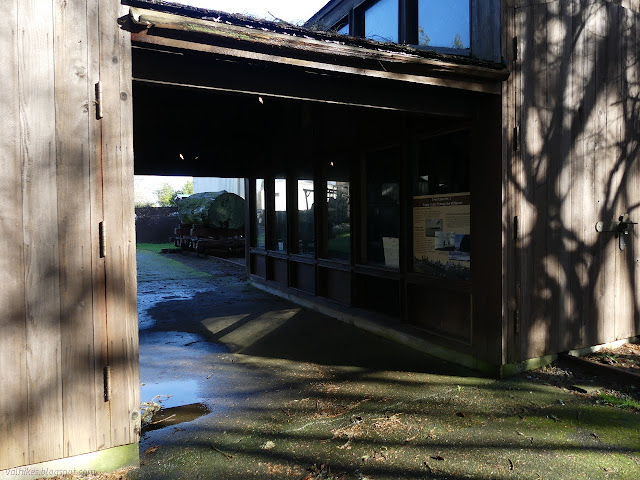
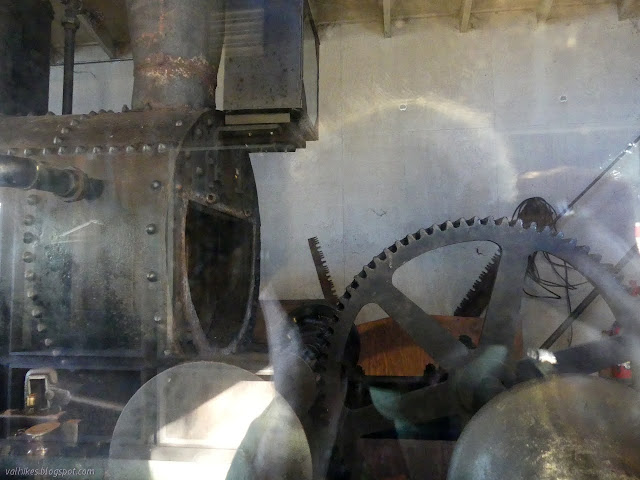

There's an old "steam-up schedule" on the windows with one a month April-September. It might be more interesting to come around just before a date and try to catch them making sure it still goes. Unfortunately, there's no dates for this year. I walked out the back to see something that was on display in the demonstration forest: a steam donkey. Actually, there's quite a few more than "a", someone might have been a little excessive at one point. They've got five in all sizes. The sign on one says it was the biggest ever made. Others are smaller than the one I'd seen before. Seeing them in all sizes has made me finally realize that one of the seemingly random bits of metal I have found out in Falk is probably the boiler off one of these.
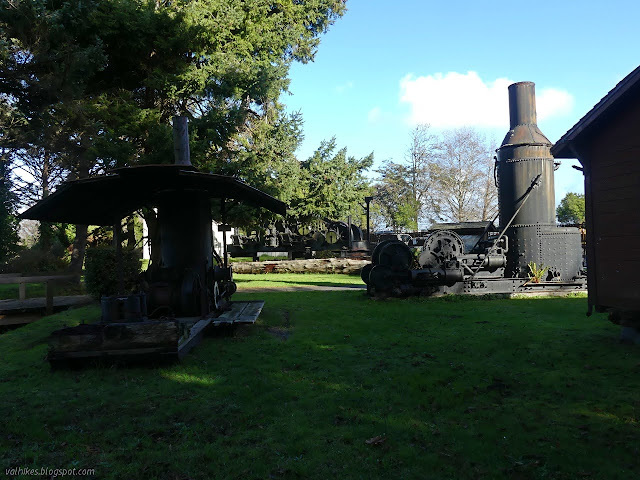

Along the way, I found a sign about local boy John Dolbeer who invented the Dolbeer Logging Engine, dubbed steam donkey by the people who actually used it. So that begins to explain why there are so many of them.

I found a few other exhibits as I walked the circle, but you can't look around the tiny house from when tiny houses were a way of life rather than a new thing.

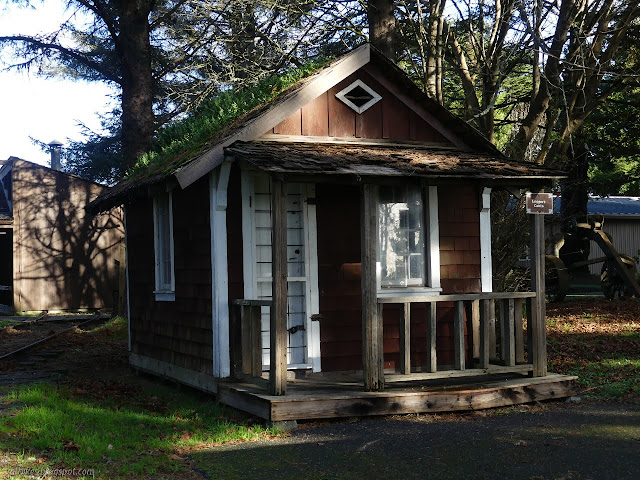
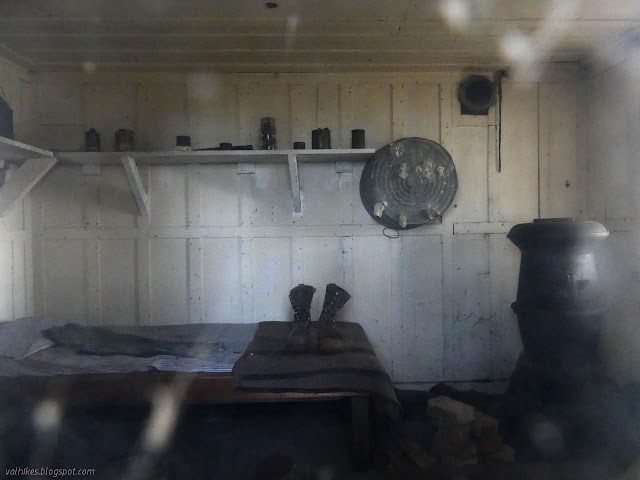
Then I was off to the fort related displays. There is very little left of the fort and what is here was ultimately preserved simply because old "Unconditional Surrender" Grant was the quartermaster here for about 3 months on his way to becoming a general so famous they made him President.

One of the stated purposes for Fort Humboldt State Historic Park now is to remember and learn, which means not shying away from mentioning genocide and massacre. The first was at the instigation of soldiers at the fort. The fort was initially filled with federal soldiers, but was handed off to the state in 1860 when the federal troops left for the Civil War. The federal troops were under pressure from Washington DC to keep the native peoples safe and under pressure from their neighboring settlers to "finish the job" and clear out the native peoples. The state had less of a problem.

The massacre came about at the instigation of the townspeople who, one day, gathered up guns and machetes and set about a village near the mouth of the Elk River, killing hundreds of people. The fort sits with a view of the area, but that protection seems to have meant little. As horrific as these large instances are, they probably pale in comparison to the cumulative effects of small, daily events. Time didn't mellow the place out, either. Unmentioned on the signs is that time (1885) when Eureka decided to expel every single member of the "Chinese race" from the county.
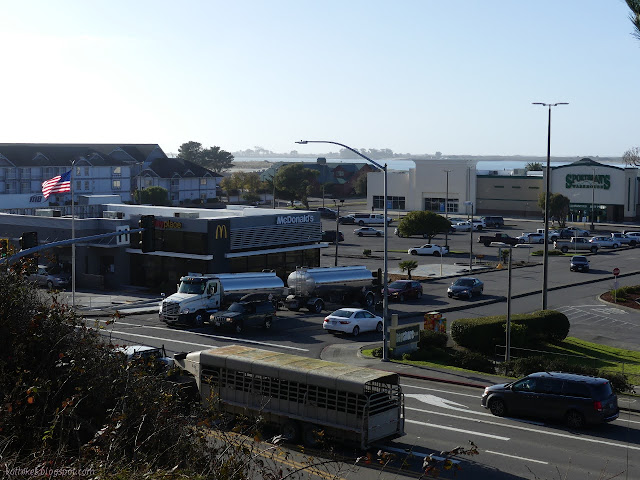
There are signs along the path showing approximately where other buildings for the fort stood. I followed it to the buildings that do stand. The smaller is set up to walk through (but not right now) and the larger is a museum. The outside displays aren't all atrocities. Between the two buildings is a primer on medicinal plants as they were understood and a small garden. Being so far from anything, medicines were not easy to come by, so a garden was kept when it was a fort.
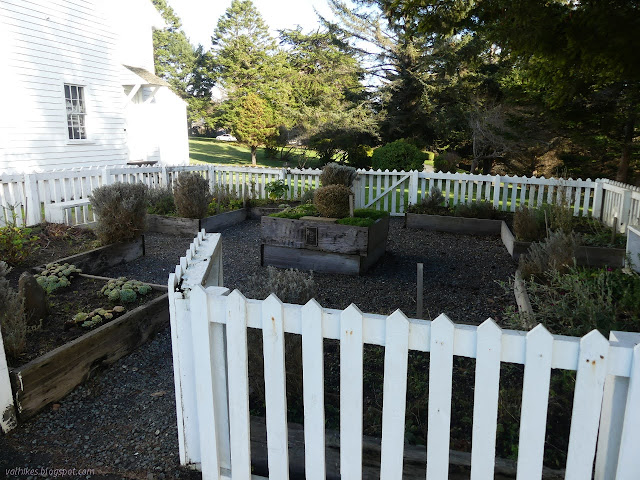

I found myself directed right back to the parking lot where I decided to trade my camera for my new kite to test it out. The wind was nearly nothing at the ground, but the flag was fluttering well and there was one spot along the edge of the bluff without so much thorn bush growing. It took a little timing as even there, the wind was minimal and inconsistent, but I eventually got it up and it flew steadily once up high.
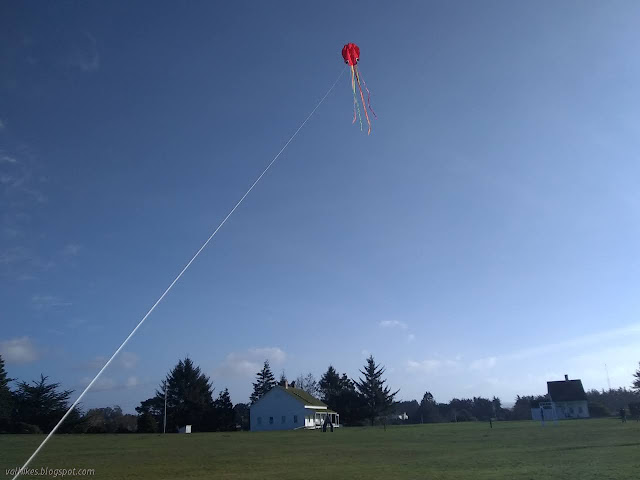
The kite worked well. I tried out the tables for eating, too. The place definitely works as a park as well as a history lesson.
©2021 Valerie Norton
Written 10 Jan 2021
Liked this? Interesting? Click the three bars at the top left for the menu to read more or subscribe!




Comments